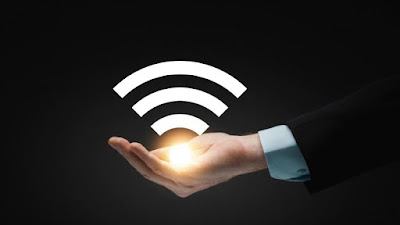Lifi Technology in Wireless Communications – Understanding the Working and Components of a Lifi Network
The need for superfast web connectivity is an ever-pressing need in
today’s data dependent world. With the exponential growth in number of smart
devices all over, new age tech that offers faster, reliable and more energy
efficient connectivity to the internet is definitely the need of the hour.
Public service systems need to become smarter, communication needs to be
more secure and networks need to be scalable to match the ever increasing
number of connected devices. The one answer to all these problems happens to be
LiFi internet technology.
Li Fi Technology-Understanding the
Working and Components of a Li Fi Enabled Network:
When you begin to explore the potential role of LiFi technology
in wireless communication, the very first question that rises
from all the techno babble is – what exactly is LiFi and how does it work?.
Let’s find out the answer-:
You must be aware that transmission of data
across the web requires information to be converted into a binary form – in the
format of zeroes and ones. WiFi technology uses radio waves to transmit this
binary data to the web wirelessly. LiFi technology, on the
other hand, uses visible light to achieve the same result. Specially designed
LED light bulbs that can create tiny fluctuations in visible light are used to
transmit binary data packets and provide web connectivity to all devices in a
given network environment. These fluctuations are so miniscule that they remain
undetected by the human eye and therefore, do not create any issues with
visibility, illumination or strain to the user’s eyes. Using these on and off
states of visible light, web transmissions with data rates of upto 224 gigabits
per second can be achieved. And that is how LiFi internet technology is able to offer lightning fast
connectivity to the internet in a secure network environment.
- Data Access Point:-Data access point connects the Li-Fi enabled data transmission system with internet via high speed router and switch. Its job is to basically act as a connecting bridge between LiFi enabled devices and the internet.
- Lifi Enabled Light Source:- Visible light is the medium for high speed uplink and downlink transmissions in a LiFi system. Hence, a reliable and energy efficient light source is a prerequisite for such a system to work. LED bulbs that can provide energy efficient illumination and can handle fast switching of light in accordance with high end modulation schemes end up being the solution here. Smart LED bulbs that are LiFi enabled become the mainstay of such a system, providing the means to transmit data packets over the web at high speeds.
- Lifi Enabled Transceiver:- The data uplink and downlink channel also needs a means for allowing various devices to connect to it. This transceiver is photo sensitive and provides seamless connectivity to the web via LiFi signals. Once the device moves from the vicinity of one light source to another light source, the system re-establishes the connectivity like the traditional cell concept.
Currently, almost all smart devices are WiFi
enabled and are hence, ill-equipped to establish connections within a LiFi
network. However, with the use of smart dongles, you can enjoy the benefits of Li Fi technology in
wireless communication without much hassle. Get yours today!





Comments
Post a Comment